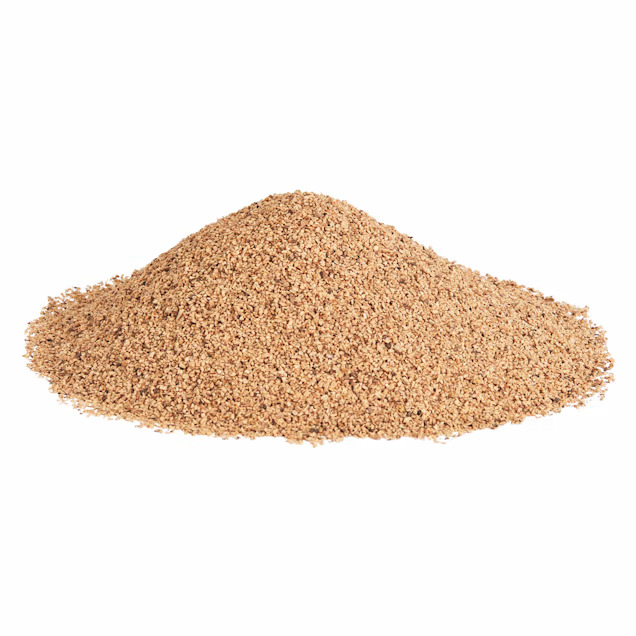Industrial uses of walnut shells
Contents |
[edit] What is walnut shell?
Walnut shells are the hard outer covering of walnuts. They are composed of cellulose, lignin, and hemicellulose, giving them a hard and durable nature. These shells are ground into various sizes, ranging from coarse granules to fine powders, depending on their intended use.
[edit] Properties of walnut shell
Walnut shells possess several unique properties that make them suitable for use in drilling fluid mud:
- Hardness: They are hard and durable, capable of withstanding high pressures and abrasive conditions.
- Biodegradability: Being a natural product, walnut shells are biodegradable and environmentally friendly.
- Chemical Resistance: Walnut shells are resistant to chemical breakdown, maintaining their structure in various chemical environments.
- Low Specific Gravity: They have a low specific gravity, which helps in maintaining the density of drilling fluids without significantly increasing the overall weight.
- Non-Toxic: Walnut shells are non-toxic, making them safe for use in various drilling operations.
[edit] Uses of walnut shell in drilling fluid mud
The drilling industry constantly seeks innovative and efficient materials to enhance the performance of drilling fluids. Walnut shells have emerged as a valuable additive in drilling fluid mud, offering numerous benefits. This blog will delve into the characteristics, uses, applications, advantages, disadvantages, and future prospects of walnut shell in drilling fluid mud. Additionally, we will highlight Peak Universal Business as a top supplier of high-quality walnut shells.
Walnut shells are used in drilling fluid mud primarily as a lost circulation material (LCM) and a bridging agent. Let's explore these applications in detail:
[edit] 1. Lost Circulation Material (LCM)
Lost circulation is a common problem in drilling operations where the drilling fluid is lost into the formation through fractures or highly permeable zones. Walnut shells are added to drilling fluid mud to mitigate this issue. They act as a plugging agent, filling the voids and fractures, thus preventing further fluid loss.
- Effective Plugging: Walnut shells effectively plug the fractures and voids, minimising fluid loss.
- Cost-Effective: Using walnut shells as an LCM is cost-effective compared to other synthetic materials.
- Environmentally Friendly: Being a natural product, walnut shells pose no environmental hazards.
[edit] 2. Bridging Agent
Walnut shells are also used as a bridging agent in drilling fluid mud. Bridging agents are materials added to drilling fluids to form a filter cake on the well bore walls, preventing the fluid from invading the formation. This helps in maintaining well bore stability and preventing formation damage.
- Formation of Filter Cake: Walnut shells help in forming an effective filter cake, reducing fluid invasion.
- Maintains Well bore Stability: By preventing fluid invasion, walnut shells help maintain well bore stability.
- Non-Damaging: Walnut shells are non-damaging to the formation, ensuring the integrity of the well bore.
[edit] Applications of Walnut Shell in Drilling Fluid Mud
Walnut shells are used in various drilling applications, including:
- Oil and Gas Drilling: Walnut shells are widely used in oil and gas drilling operations to control lost circulation and maintain well bore stability.
- Geothermal Drilling: In geothermal drilling, walnut shells help in preventing fluid loss into the formation, ensuring efficient drilling operations.
- Water Well Drilling: Walnut shells are also used in water well drilling to control lost circulation and improve drilling efficiency.
[edit] Advantages of Using Walnut Shell in Drilling Fluid Mud
- Eco-Friendly: Walnut shells are biodegradable and pose no environmental hazards, making them an eco-friendly choice for drilling operations.
- Cost-Effective: Compared to synthetic LCMs and bridging agents, walnut shells are cost-effective, reducing overall drilling costs.
- Efficient Plugging: Walnut shells effectively plug fractures and voids, minimising fluid loss and improving drilling efficiency.
- Non-Damaging: Being non-toxic and non-damaging, walnut shells preserve the integrity of the formation and well bore.
- Versatility: Walnut shells can be used in various drilling applications, from oil and gas to geothermal and water well drilling.
[edit] Disadvantages of Using Walnut Shell in Drilling Fluid Mud
- Limited Availability: The availability of walnut shells can be limited, especially in regions where walnuts are not commonly grown.
- Size Distribution: Achieving the desired size distribution of walnut shells can be challenging, affecting their performance as an LCM or bridging agent.
- Handling and Storage: Walnut shells require proper handling and storage to prevent contamination and degradation.
- Compatibility Issues: In some cases, walnut shells may not be compatible with certain drilling fluids, requiring additional testing and adjustments.
[edit] Future Prospects of Walnut Shell in Drilling Fluid Mud
The future of walnut shells in drilling fluid mud looks promising, with ongoing research and development aimed at enhancing their performance and expanding their applications. Key trends and prospects include:
- Enhanced Processing Techniques: Advances in processing techniques will enable the production of walnut shells with more consistent size distribution and improved performance.
- Sustainable Sourcing: Efforts are being made to ensure the sustainable sourcing of walnut shells, promoting environmentally friendly drilling practices.
- New Applications: Research is exploring new applications of walnut shells in drilling fluids, such as their use in high-temperature and high-pressure drilling environments.
- Improved Compatibility: Ongoing research aims to improve the compatibility of walnut shells with various drilling fluids, ensuring their effective use in diverse drilling operations.
[edit] Related articles on Designing Buildings
Featured articles and news
Ebenezer Howard: inventor of the garden city. Book review.
The Grenfell Tower fire, eight years on
A time to pause and reflect as Dubai tower block fire reported just before anniversary.
Airtightness Topic Guide BSRIA TG 27/2025
Explaining the basics of airtightness, what it is, why it's important, when it's required and how it's carried out.
Construction contract awards hit lowest point of 2025
Plummeting for second consecutive month, intensifying concerns for housing and infrastructure goals.
Understanding Mental Health in the Built Environment 2025
Examining the state of mental health in construction, shedding light on levels of stress, anxiety and depression.
The benefits of engaging with insulation manufacturers
When considering ground floor constructions.
Lighting Industry endorses Blueprint for Electrification
The Lighting Industry Association fully supports the ECA Blueprint as a timely, urgent call to action.
BSRIA Sentinel Clerk of Works Training Case Study
Strengthening expertise to enhance service delivery with integrated cutting-edge industry knowledge.
Impact report from the Supply Chain Sustainability School
Free sustainability skills, training and support delivered to thousands of UK companies to help cut carbon.
The Building Safety Forum at the Installershow 2025
With speakers confirmed for 24 June as part of Building Safety Week.
The UK’s largest air pollution campaign.
Future Homes Standard, now includes solar, but what else?
Will the new standard, due to in the Autumn, go far enough in terms of performance ?
BSRIA Briefing: Cleaner Air, Better tomorrow
A look back at issues relating to inside and outside air quality, discussed during the BSRIA briefing in 2023.
Restoring Abbotsford's hothouse
Bringing the writer Walter Scott's garden to life.
Reflections on the spending review with CIAT.
Retired firefighter cycles world to raise Grenfell funds
Leaving on 14 June 2025 Stephen will raise money for youth and schools through the Grenfell Foundation.
Key points for construction at a glance with industry reactions.
























